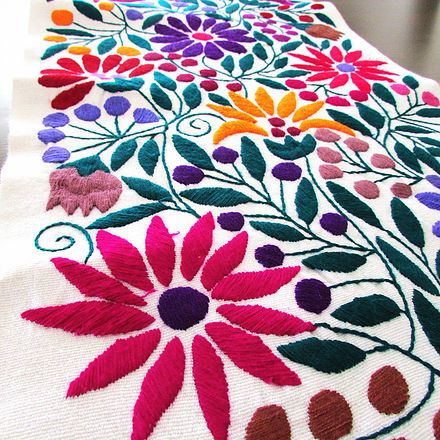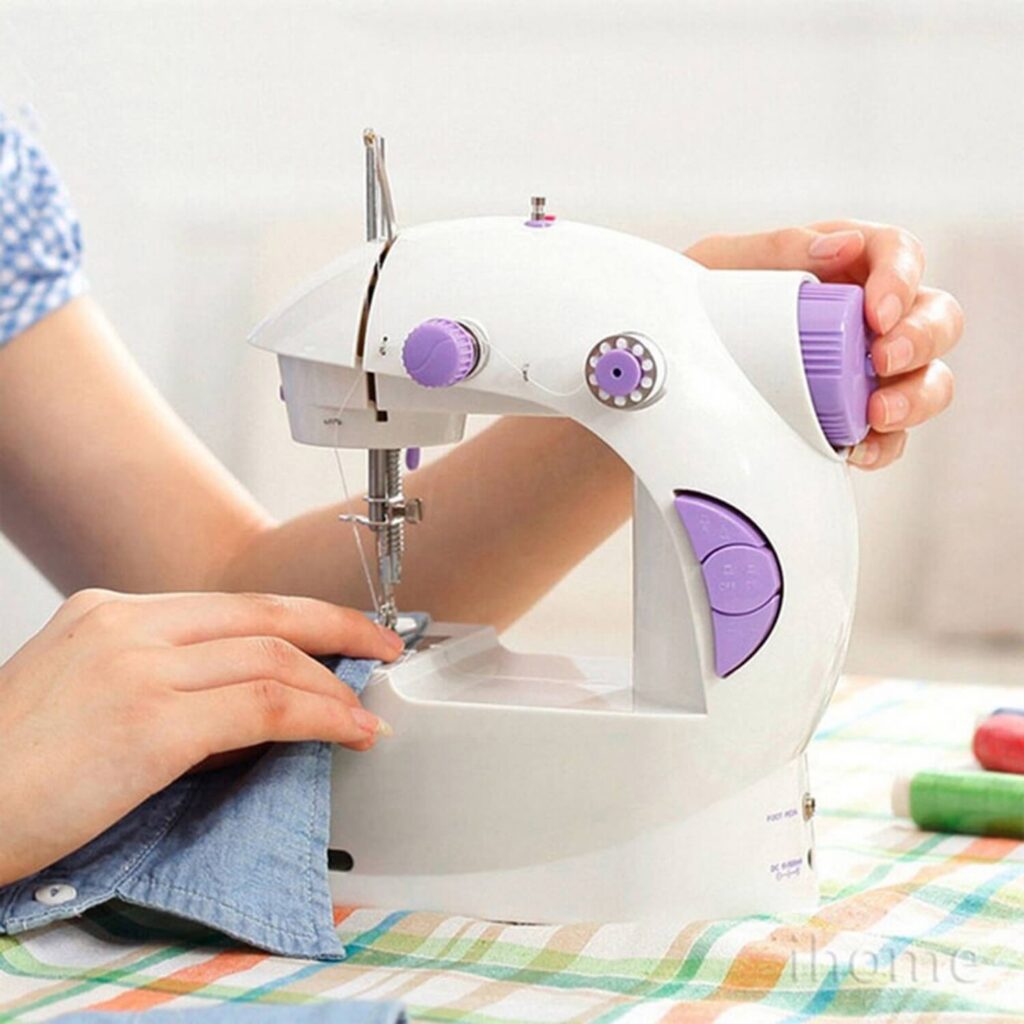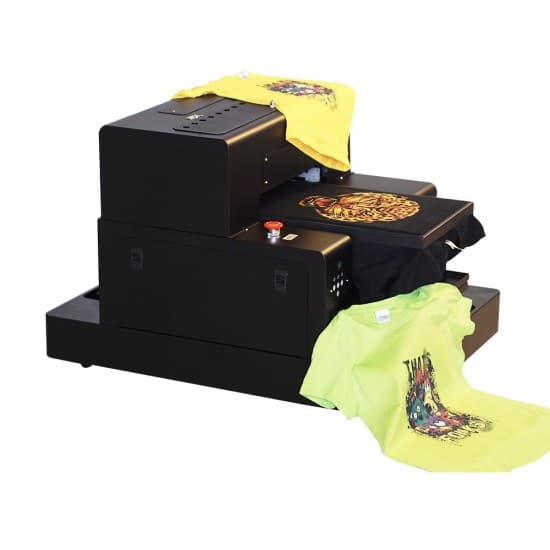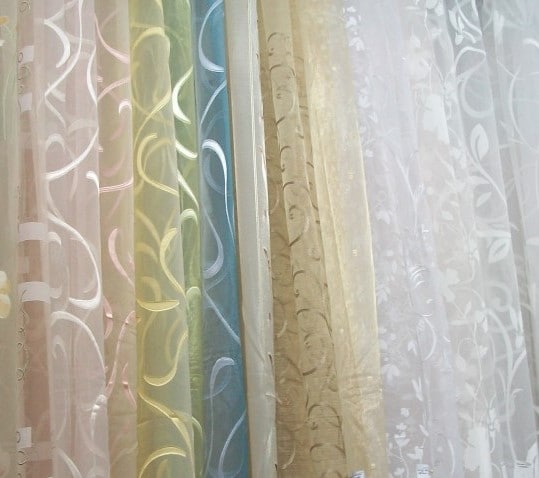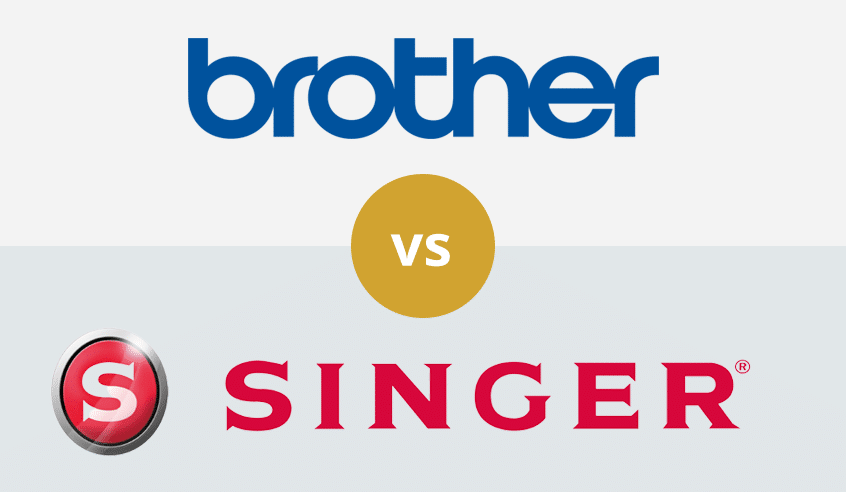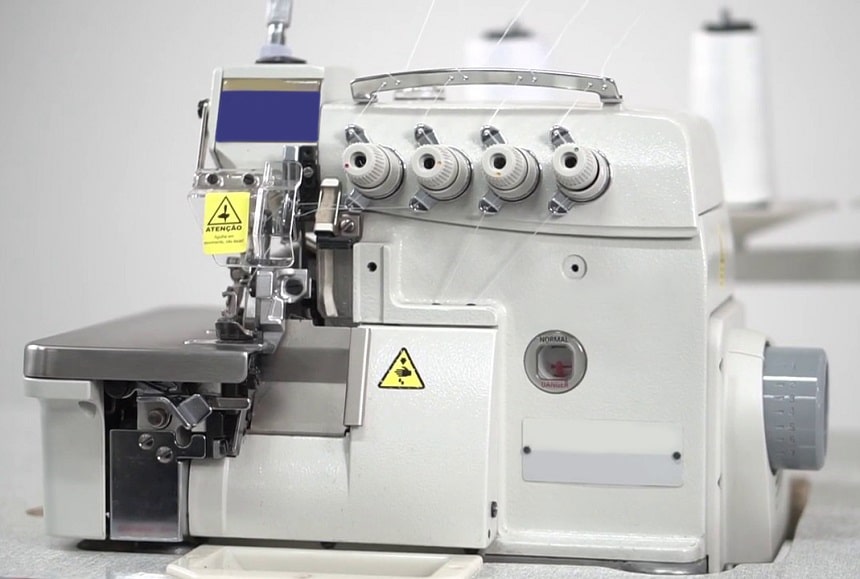

For Janome, serger machines are true working and finish-up tools. The quality of the stitch, SPM, the number of threads, good stitch width, stitch length adjustment, and the guarantee of the product are the main characteristics to watch out for in the best Janome Serger machines. These offer a very professional sewing finish. Although a serger may seem like an unnecessary purchase for non-professional works, the truth is that those who are dedicated to the world of sewing consider it a treasure. In fact, without being a professional in this area, you can modify your clothes, or even design your clothes with high standards.
If you love to be creative with your clothes, a serger is all you need. It streamlines the manual work of making garments. However, there is such a wide variety of sewing and overlock models that it can be overwhelming to make the right choice. This is why we would like you to discover the wonderful world of Janome overlocking equipment. In this specialized guide, we will analyze in detail the best Janome Serger sewing equipment, its advantages, and how you can buy a Janome sewing machine at the best price.
The Janome MOD 8933 serger is an overlocking machine with a lay-in threading and differential feed. It is a perfect ally for a budding fashion enthusiast. Compact and modern, it offers all the required features you want in a machine for making crafts, knits, and denim projects.
There are the 3 and 4 thread stitch options which let you have the right settings for your fabric making projects. There’s also the rolled hem options with the quick change advantage. This lets you finish your garment easily, faster, and elegantly. It also lets the machine fold some fabric pieces underneath while stitching it neatly. The presence of the differential feed prevents puckering and stretching on virtually all types of fabrics.
What we liked: The thread stitching options let you choose the best settings for your fabric projects. We also like the retractable removable upper knife. It lets you overlock without the need to cut your fabrics. Sturdy and heavy enough, it is built like a tank.
What could be better: The Janome MOD 8933 is a great machine but threading is not easy.
Although the general opinion is that 5-thread overlockers are the best, the truth is that it will depend on the function you need to deploy it for. In other words, there is no need to obtain a machine with peculiar characteristics and functions, if only a practical finish is desired. For this reason, this cover stitch machine is an excellent option. It provides you with 1000 stitches per minute.
Although you can get a serger that allows you to cut, overcast, and sew at the same time, this machine provides additional functions such as decorative stitches and neck strips. The serger is multifunctional, that is, you can change the threading and in this way change from one function to another.
So this equipment is best for making professional level decorative, concealed hem stitching. It is worth noting that this “hidden” function is one of the characteristics of high-end sewing machines. However, with this model, you can find a very professional finish at a much lower price. With the purchase of this model, you can get a package of accessories that will facilitate your work, as well as an instructional manual with very useful ideas to apply to your clothing arrangements.
What we liked: The machine is easy to use. It is a good learning machine for beginners. We also like its multifunction design. It is suitable for overlocking and coverstitching.
What could be better: The machine emits some chemical smell. Also, it’s not the best serger for stretchy fabrics.
The Janome 8002D is an overlock sewing machine that is sold at a very reasonable price. The machine is a powerful tool for sewing works. It has a speed of 1300 stitches per minute and works with one needle to three threads and with two needles with four threads.
It allows you to choose between four types of overlock seams, varying the stitch width between 3 to 5 mm and the length of the same between 1 to 4 mm. With the Janome overlock 8002D, you can adjust the pressure of the presser foot and its threading guide is super easy to follow and achieve.
Also, it has a clear threading diagram that will make your job easier. To make it easier and more comfortable to use, the Janome 8002D serger has a retractable knife and incorporated lighting. We also like the threading chart. It is easy to read and color-coded
What we liked: The first thing we like about this serger is that it is offered at a price affordable to the general public. Besides that, it can be used with 3 or 4 threads and with 1 or 2 needles.
What could be better: It has no free arm for sewing sleeve openings.
The MyLock 634D from Janome is yet another overlock serger equipped with a self-threading lower looper. The MyLock 634D is unmatchable when it comes to making professional overlocks. The machine features two needles with 2, 3, and 4 thread stitching options. Unlike on the MOD 8933, threading is relatively easy, thanks to the color-coded thread guide. The lower looper system of threading also makes things easy.
Without the need to change your needle plate, you can easily and quickly change to the rolled hemming option. The machine features a bonus kit which includes a beading attachment, a ⅛ inch piping foot, a blind stitch foot, and a three-pack serger size 14 needles.
The serger machine runs very smoothly and is relatively easy to thread. After the purchase of the machine, you can set up and start using it in just 10 minutes.
What we liked: We like the number of threading options the serger allows. It’s a 2/3/4 thread serger with lay-in threading. With up to 1300 stitches per minute, beginners and professionals can choose this machine.
What could be better: The price could be lower, considering the quality of the machine.
What is a Janine serger/overlock machine? What is it used for? Why 3, 4, or 5 coils? Do I need it for my sewing projects? What do you need to consider to choose a good serger? So many questions that one can ask when one is interested in sergers and does not know anything or not much. In this buying guide section, we aim to treat these questions while helping you realize what sergers can and can’t do. We’ll show you what to consider during the purchasing process, whether you are an experienced user or a beginner.
Janome is a Japanese brand whose main asset is the innovative concept on which it bases the design of its machines. Janome serger equipment are world-renowned for their quality, reliability, and simplicity. The Japanese brand manufactures mechanical, computerized, embroidery, sewing and embroidery machines, overlock and cover stitching, all with a worldwide guarantee.
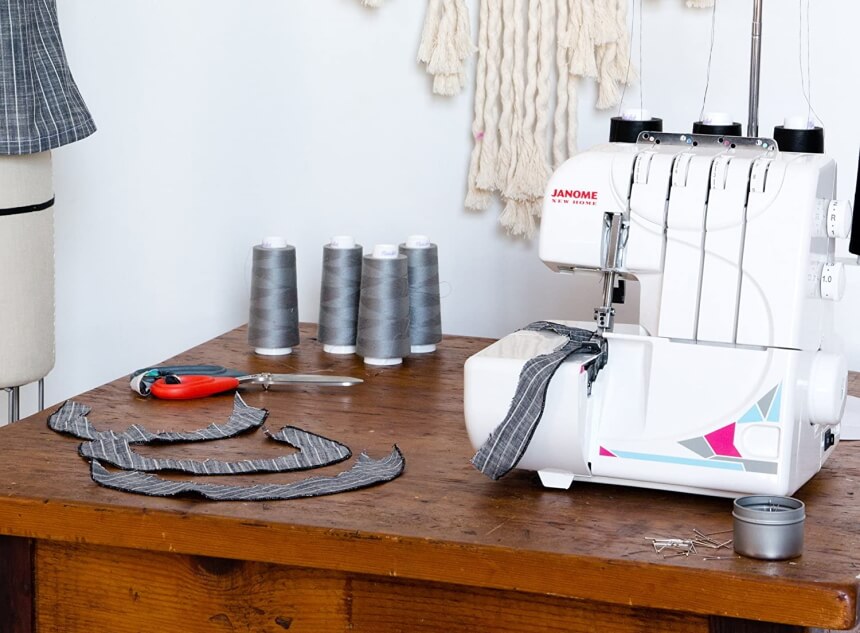
The company has developed models that suit everyone’s tastes and budget. The CoverPro 900CPX guarantees perfect finishes with ease, the MOD-8933 is specialized in rolled hem without having to change the needle plate to achieve it, while the 8002D is ideal for beginners. It is very simple to use while having all the basic functionalities, especially concerning the overlock stitch. But in addition to these three models, it also produces more classic overlockers, such as the Janome MyLock 634D, which at the same time is provided with many useful functions.
The brand also provides you with many accessories which can be very practical. The ultimate advantage and not the least of the Janome brand is that all of its products are guaranteed for at least 5 years (the Janome 8002D comes with 25 years limited warranty) for even greater safety.
Whether you are new to sewing or you are a professional, the Janome company therefore necessarily has an overlock machine for you, as the range of its products is vast and particularly innovative.
To choose your serger according to your needs but also your budget, here are the main criteria to take into account to make the best choice.
The SPM of a sewing machine is an abbreviation for the stitches per minute – that is, the number of stitches the particular machine can make in a minute.
For convention sewing machines, the approximate number is around 600. However, serger models can make on an average 1700 SPM. This ensures they can seam, overcast, and trim, all in just one operation.
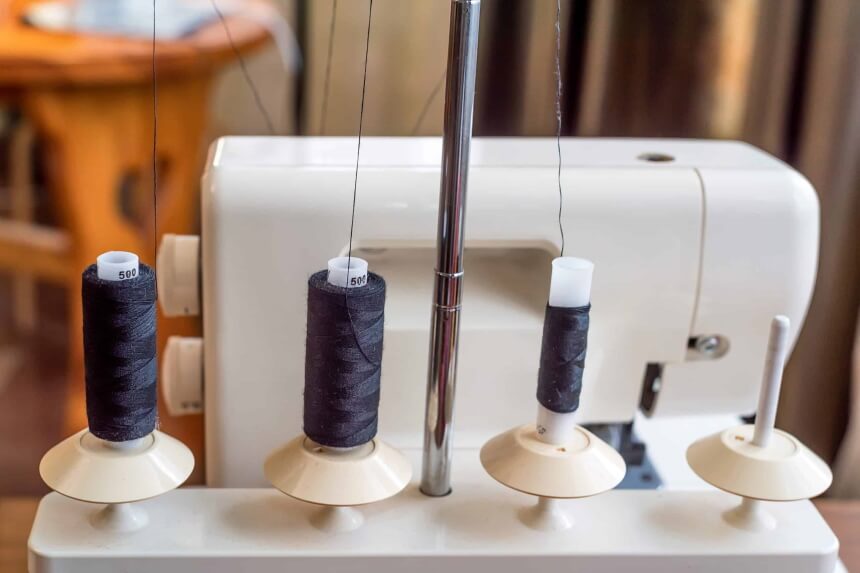
The differential controls the speed at which the feed dogs feed the fabric. Unlike the sewing machine which is equipped with only one row of feed dogs, the serger has two. The first row at the front and a second at the rear. As these two rows are independent, you can increase or decrease the value of the differential to prevent stretch fabrics from being stretched (one claw slower than the other) or light fabrics from being gathered (one feed faster than the other). When the differential is not activated (1 or N), the two rows advance at the same speed for sewing cotton fabrics for example. For total control of your sewing work, differential feed is essential. It is usually available on the majority of serger models.
The serger incorporates two knives: a movable upper knife and a fixed lower knife, located right next to the needles. They are used to cut the fabric at a perfect distance for a clean finish. You can adjust them according to the width of the fabric you want. But the ideal is to keep a few specific margins including:
Most sergers are equipped with a removable knife, but be sure to check this feature. To perform certain tasks, you will need to deactivate the knife so as not to cut the fabric.
The serger is equipped with two loopers which guide the threads to under the needle plate. With the help of the needles, the machine can create the stitches by interweaving the different threads one above the other. They sometimes make threading the threads a bit complex but are essential for the proper functioning of the machine.
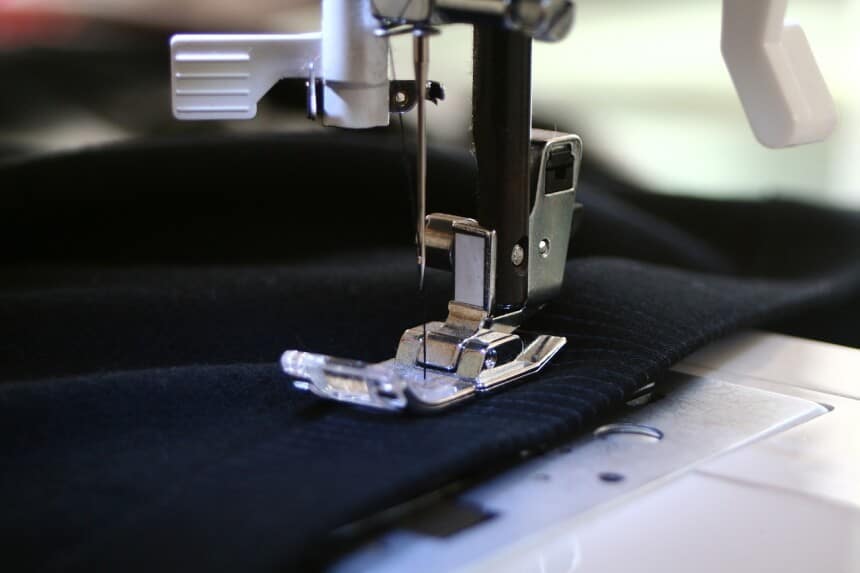
Threading the threads is often a tedious step to perform. But it is an essential step before starting to sew or when it is necessary to change the thread in the middle of a seam. Threading consists of passing the different threads one by one through the needles and loopers, scrupulously respecting the order of passage of each thread. For 4-thread serger models, two threads pass through the loopers on the inside of the machine while the other two pass through the needles on the outside. Most overlockers (like the Janome MyLock 634D) have colored markers to follow to simplify threading. Instructions for the various steps are also inside the front cover of the machine to always have them at hand. In most cases, the threading follows the same sequence from one serger to another. The passage of the threads generally begins with the threading of the upper looper (red) then the lower looper (yellow) before ending with the threading of the right needle (green) then the left needle (blue). To simplify your task, some sergers offer an automatic air threading system. The threading works with a jet of pressurized air which propels the thread through the machine to thread the loopers (upper and lower) in seconds. This feature saves time but necessarily increases the cost of the machine.
Thread tension discs allow the tensions of each thread to be adjusted independently of each other. The tension should be adjusted according to the type of fabric and thread used or the selected stitch point. The larger the number indicated, the greater the tension of the thread. Each tension adjustment knob is usually differentiated by a color code corresponding to the thread of the loopers or needles. The tension is adjusted manually, but on some high-end serger models, the tension can be automatically adjusted by the machine depending on the selected stitch point.
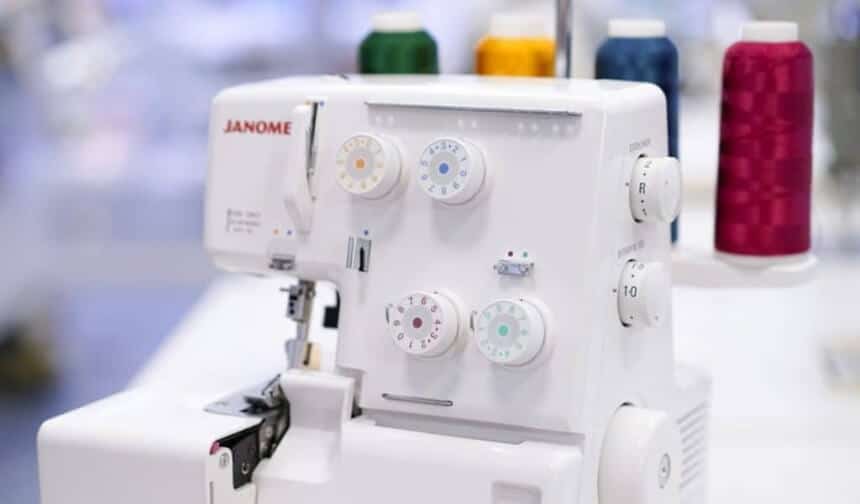
Most overlockers offer some interesting accessories as options to make the job easier and achieve quality finishes. You just have to find the one that suits your needs.
The price is obviously an important element to take into consideration when making your choice. Before putting out a budget, you must consider your needs, your level of sewing, and your frequency of use. A serger is a machine with complex mechanics. Its price will of course depend on the type of serger you choose (3 threads or 3 and 4 threads or 2, 3, and 4 threads) but also on its functionalities. For occasional use, there are entry-level models around $200 but prices can quickly climb up if you want advanced models such as the Janome CoverPro 900CPX. For more regular use, go for the higher range instead. For a price of around $500, you will find models that offer a much better level of finish and comfort of use. Whatever happens, avoid low-cost machines that are often fragile, limited in their performance, and which may discourage you. So yes the purchase of a serger can command a budget a little higher than that of a sewing machine. For example, you can find excellent sewing machines like the Brother FS40 for a price well below $200. Nevertheless, with the purchase of an overlock machine, you will not be disappointed with the result of your sewing projects.
Janome is a Japanese brand that specializes in high-quality overlocking or serger machines. Simply put, they are one of the best in the business of serger machine manufacturing. We’ve provided four models in this review, but here is our final verdict.
Our overall best model and the Editor’s Choice is the Janome MOD-8933. This is an overlocking machine with a lay in threading and differential feed. It is a perfect ally for any budding fashion enthusiast as well as a skilled user. Compact and modern, it is a machine for making crafts, knits, and denim projects.
The Janome CoverPro 900CPX comes with an additional budget but it has the best value among the selected products. This machine is easy to use. It is a good learning machine for beginners. You’ll like its multifunction design. It is suitable for overlocking and coverstitching.
Finally, if you want one of the best Janome serger machines, but for a relatively low price, choose our Budget Pick, the Janome 8002D. This is an overlock sewing machine with a speed of 1300 stitches per minute.
